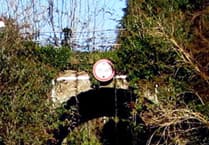On July 26th 1936, King Edward VIII carried out one of the most significant acts of his short reign when he unveiled the Canadian memorial at Vimy Ridge. Designed to commemorate all the 60,000 Canadians who died in France during the Great War, it bears the names of 11,285 men with no known grave.
This magnificent memorial, visible for miles around, is adjacent to the battlefield where Canadians fought one of the most bitterly contested clashes of the Great War. Vimy Ridge was a German stronghold and a significant strategic point in their line. The Canadians attacked on 9th April 1917, and completed the capture of the Ridge on 12th April, with heavy casualties.
After the end of the War, the French Government made grants of land to its allies (so that, for instance, Commonwealth War Graves Cemeteries containing British graves are technically British soil). This included a significant grant of land at Vimy Ridge to Canada, and a competition was held for the design of a suitable monument. The winning design was submitted by Walter Allward, who undertook painstaking research to locate a stone which would be suitable for the exposed location. Simultaneously with the construction of the Memorial, parts of the trench network on the battle site were stabilised and made permanent, though much of the site was – and remains – too dangerous to allow public access.
In proportion to its population (8 million in 1918), Canada’s loss was very high, and Vimy Ridge remains a significant place of pilgrimage for Canadians. A fine battlefield museum is staffed by young French-Canadians, who serve there for a year as part of their university studies. It is a deeply moving place to visit.
Linton & District History Society next meets August 2nd, at 7 for 7:30p.m., Linton Village Hall. Owen Adams will be speaking on events in the Forest of Dean in 1631-2, the Skimmington Riots. Visitors are welcome, £5 a head.





Comments
This article has no comments yet. Be the first to leave a comment.